Discover top guides, trends, tips and expertise from AIO Writers
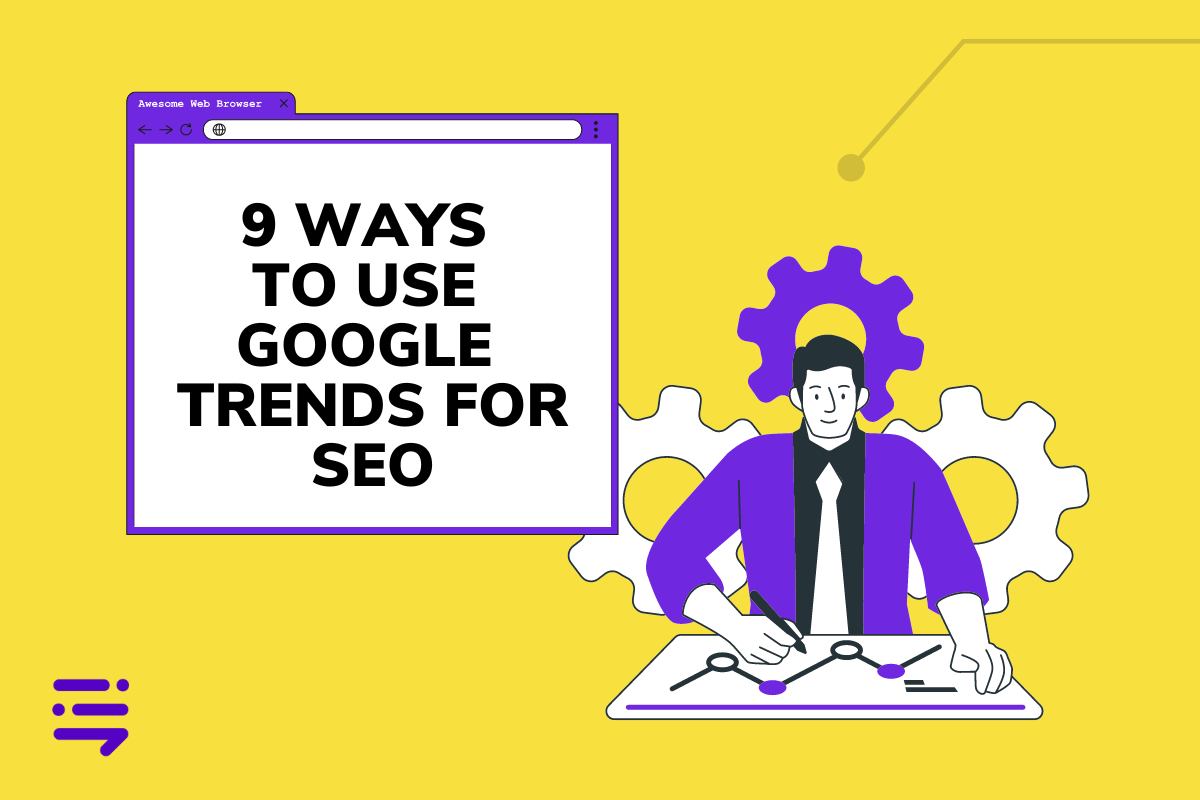
You’ve heard whispers about this powerful tool called Google Trends, and you’re curious. Could it really be the secret weapon to skyrocket your SEO rankings and leave your competitors in the dust?
The answer is a resounding yes!
Google Trends is like having a crystal ball that reveals what people are searching for online. It’s a goldmine of data that can help you create content that not only ranks but also resonates with your target audience.
So, are you ready to learn how to use Google Trends for SEO and take your search game to the next level?
Let’s get started!
Table Of Contents:
- What Is Google Trends and How Does It Work?
- 9 Ways to Use Google Trends for SEO and Keyword Research
- Create Awesome Content from Google Trends Data
- How to Use Google Trends for Product Research
- How to Use Google Trends for E-commerce
- Challenges and Limitations of Google Trends for SEO
- Case Studies: Successful Implementations of Google Trends in SEO Campaigns
- FAQs: How to Use Google Trends for SEO
- Conclusion
What Is Google Trends and How Does It Work?
Google Trends is a powerful tool that can help you take your SEO strategy to the next level. It provides valuable insights into search volume trends, breakout keywords, and trending topics.
But before we dive into how to use Google Trends for SEO, let’s first understand how it works.
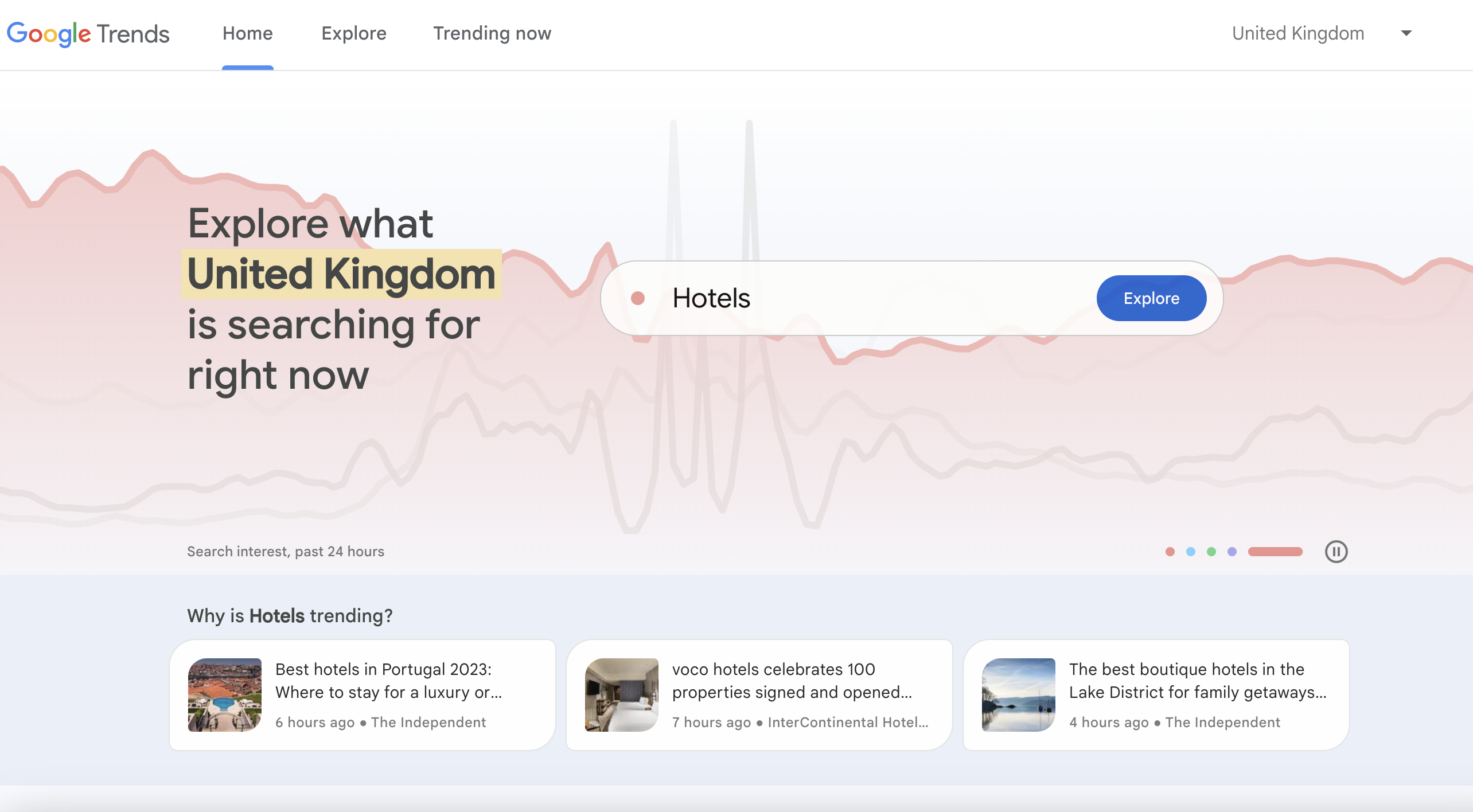
Analyzing the Numbers
Google Trends shows search interest for a given term relative to the highest point on the chart. A value of 100 represents peak popularity, while 50 means the term is half as popular.
A score of 0 indicates there wasn’t enough data for the searched term.

Reading the Interest Over Time Graph
The Interest Over Time graph shows how frequently a search term is entered into Google relative to the site’s total search volume over a given period.
You can adjust the time range to see data from the last hour, day, week, month, year, or custom period.

Searches by Location
Google Trends lets you see where search terms are most popular geographically. You can compare search volume across regions, cities, and languages.
This data is super helpful for local SEO efforts and identifying regional interest in specific topics or products.

Click here to learn more about the basics of Google Trends.
9 Ways to Use Google Trends for SEO and Keyword Research
Now that you know the basics of how Google Trends works, let’s explore some actionable ways to use it for SEO and keyword research.
1. Find New Keyword Ideas
One of my favorite ways to use Google Trends for keyword research is to enter a broad search term related to my niche and see what related keywords and topics are suggested. This can uncover new keyword ideas I may not have considered before.
Pay close attention to the “Related queries” section to find long-tail keyword variations with rising popularity.
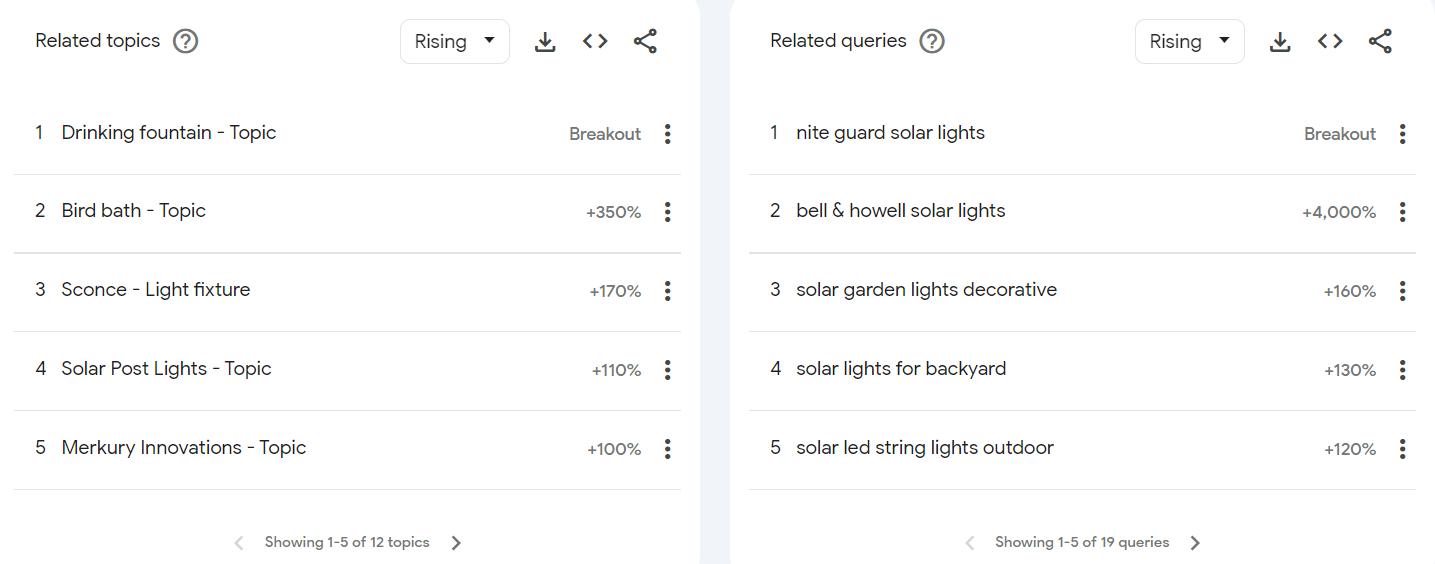
2. Discover “Breakout” Keywords
Google sometimes replaces a percentage growth with the word “Breakout” for keywords experiencing a sudden surge in popularity (over 5000%).
These trending search terms can present timely opportunities for creating relevant content that captures search interest.
Just be aware that breakout trends may be short-lived, so act quickly to capitalize on them.
3. Uncover Related Keywords
In addition to the “Related queries” section, Google Trends also shows “Related topics”. These are broader topics associated with your search term that can help expand your keyword list and provide content ideas.
Incorporating related search terms helps strengthen your content’s relevance and context.
4. Optimize Your Local SEO
By analyzing search trends by location, you can identify regional keyword variations and optimize your local SEO strategy accordingly.
For example, if you notice certain cities or regions have higher search volumes for specific keywords related to your business, consider creating localized content or landing pages targeting those areas.
5. Get Accurate Search Volume Trends
While Google Keyword Planner provides an average monthly search volume, Google Trends shows relative search volume over time. This allows you to identify seasonal fluctuations, rising trends, and declining keywords.
Use this data to prioritize search terms based on their current and projected popularity.
6. Find Keyword Ideas for YouTube
Google Trends has a dedicated “YouTube Search” feature that shows the popularity of search queries on YouTube. This is incredibly valuable for optimizing your video content and discovering trending video topics.
Analyze the search patterns to craft engaging video titles, descriptions, and tags.
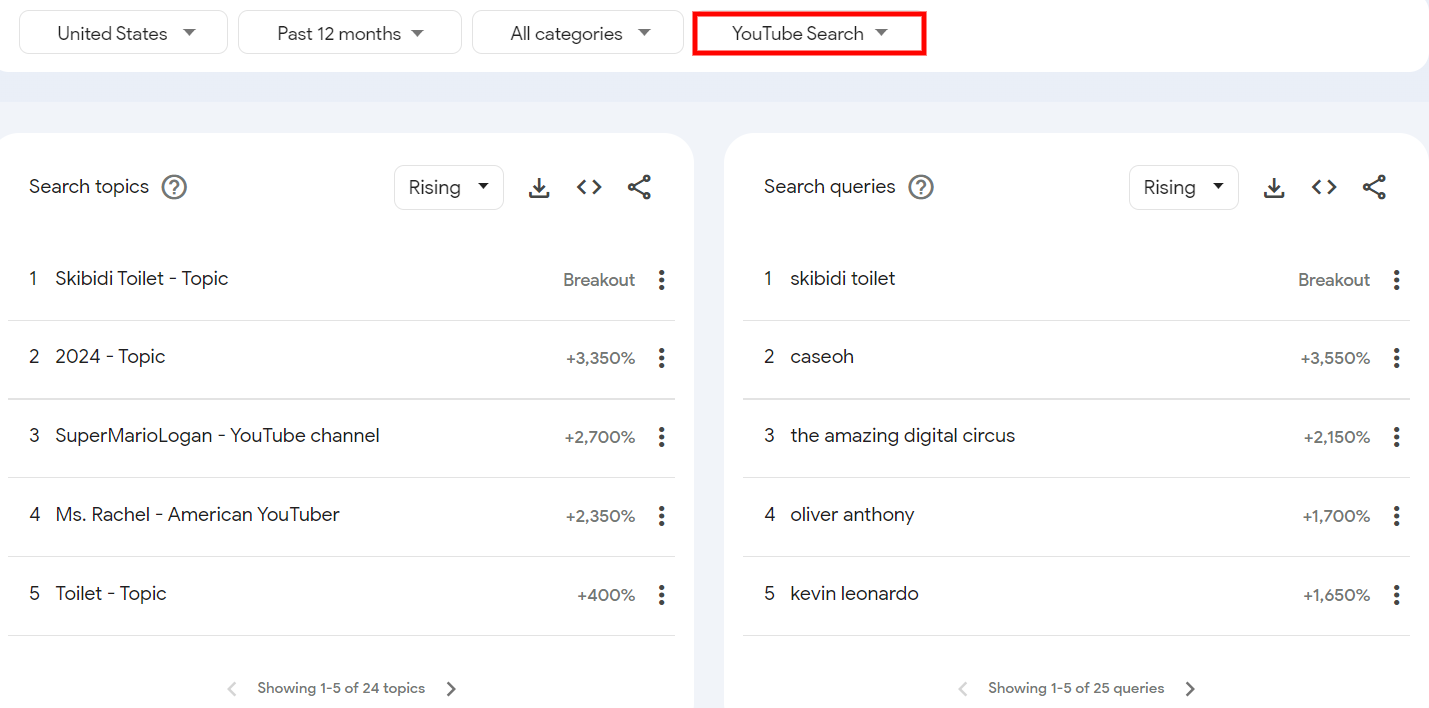
7. Compare Search Trends
You can compare the relative search volume of up to five different keywords in Google Trends. This is useful for gauging the popularity of different keyword variations, brand names, or competitors.
By comparing trends, you can prioritize the keywords with the highest potential.
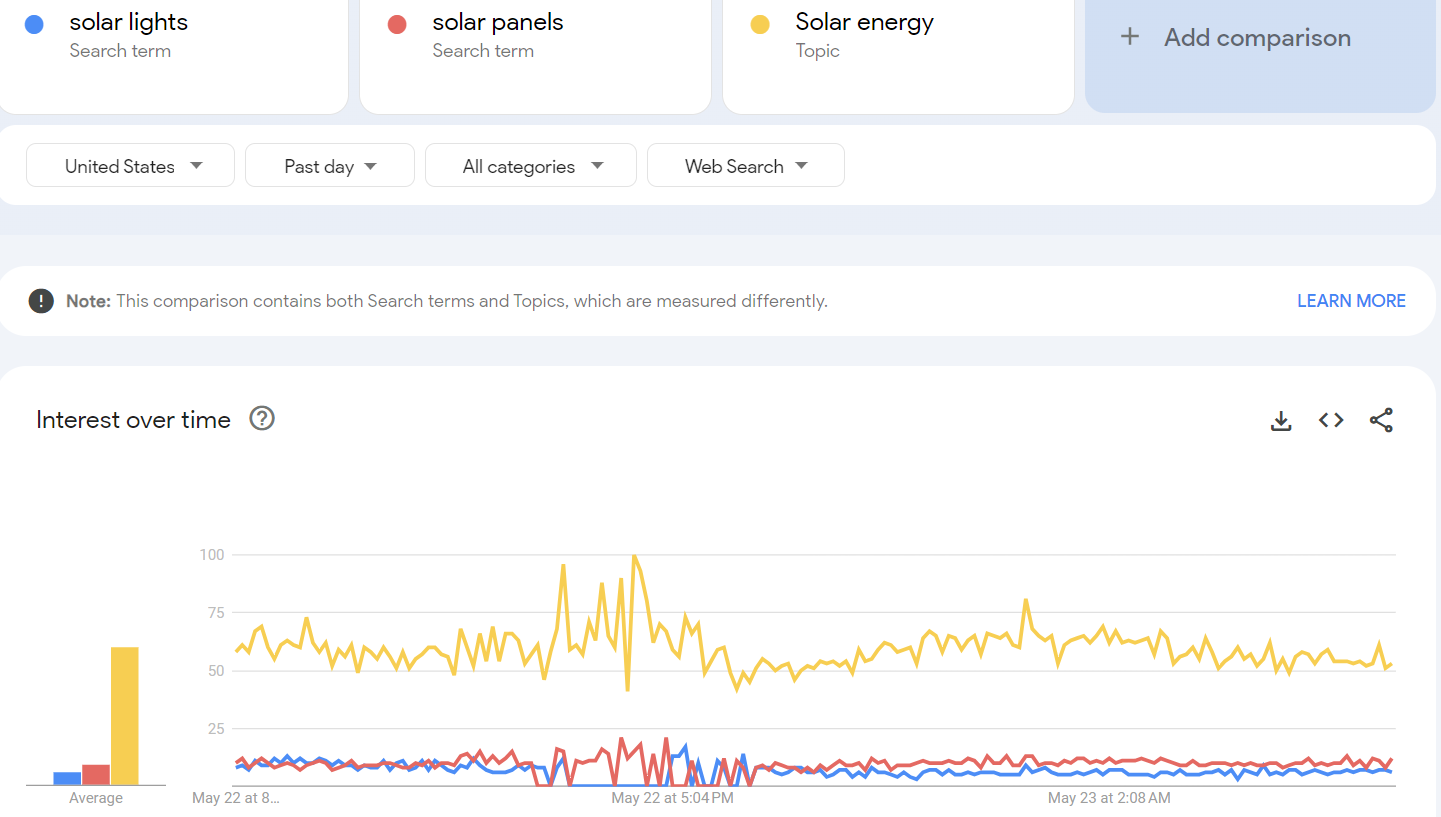
8. Analyze Your Competitors
Enter your competitors’ brand names or key products into Google Trends to analyze their search popularity over time. This competitive intelligence can reveal insights into their marketing strategies, product launches, or content performance.
Use this data to identify gaps and opportunities for your own SEO efforts.
9. Plan Your Content Calendar
Google Trends can help you plan your content by revealing seasonal trends and recurring spikes in search interest.
For example, if you notice certain keywords peak during specific months or holidays, schedule your content creation and promotion accordingly to capitalize on the increased demand.
Make Google Trends an integral part of your content planning and optimization process. Regularly monitor search trends related to your industry and incorporate the insights into your content calendar.
While Google Trends provides valuable insights, it’s most effective when used in conjunction with other keyword research tools like Google Keyword Planner or AnswerThePublic.
Combine the search volume data from these tools with the trend information from Google Trends to make informed keyword decisions.
Create Awesome Content from Google Trends Data
Google Trends is a goldmine for content ideation. By identifying trending topics and search patterns, you can create timely, relevant content that resonates with your target audience.
Here are some ways to incorporate Google Trends data in your content strategy:
Identify Trending Topics for Blog Posts and Videos
Use Google Trends to spot trending topics within your industry that are gaining traction. Create blog posts or videos that address these popular subjects to attract organic traffic and boost your content’s visibility.
Incorporate relevant keywords and optimize your content for search engines.
Optimize YouTube Videos with Search Insights
Utilize the “YouTube Search” feature in Google Trends to discover trending video topics and optimize your YouTube content accordingly.
Craft compelling video titles, descriptions, and tags based on popular search queries. Use the insights to create videos that align with current viewer interests and preferences.
Create Timely and Relevant Social Media Posts
Google Trends can also inspire your social media content strategy by highlighting trending topics and conversations.
Create posts that tap into current trends and engage your audience with relevant information.
Use trending hashtags and keywords to increase your posts’ visibility and reach on social platforms.
How to Use Google Trends for Product Research
Understanding market trends is crucial for successful product research. By leveraging tools like Google Trends, you can gain valuable insights into consumer behavior and preferences.
Here’s how you can use Google Trends for product research:
Select the Right Keywords
The first step in using Google Trends is selecting relevant keywords related to your product.
For example, if you’re interested in selling “Spiderman costumes,” enter this keyword on the search field.
Analyze Seasonal Demand
Avoid missing out on peak seasons!
The demand for seasonal products such as Halloween costumes typically peaks a month before the event.
If data shows high interest from August 1st to October 31st, plan your PPC budget accordingly during these months.
This strategy ensures maximum visibility and higher chances of sales conversions during peak periods.
Pro Tip: You should start preparing at least six months in advance by optimizing both on-site and off-site SEO strategies. This will help you rank higher than competitors when the demand surges again next season.
Avoid Outdated Products
An essential aspect of product research is avoiding outdated or declining trends.
For instance, fidget spinners were highly popular between May 2017 and early 2018 but have since seen a significant drop in interest according to Google Trends data. Therefore, selling fidget spinners now might not be profitable as they are beyond their popularity phase.
It’s critical to always cross-reference trend data over multiple years before deciding which products to pursue further investments.
How to Use Google Trends for E-commerce
If you’re running an e-commerce store, Google Trends can help you identify what products are trending and how consumer interest is shifting over time.
Here are some of the ways you can use Google Trends for e-commerce:
Create Comparisons
If you’re selling supplements, you might wonder whether it’s better to focus on BCAA or Creatine. To find out, go to Google Trends, choose “Explore,” and create a comparison between the two terms.
- Select the geographical location that matches your target market.
- Adjust the timeframe to get relevant data (e.g., past 12 months).
- Add both search terms in the comparison fields: “BCAA” vs. “Creatine.”
The resulting charts will show which term has more search volume over time, providing insights into current trends and seasonal variations.

Dive Into Related Queries
The initial trend analysis showed creatine being significantly more popular than BCAA. However, don’t disregard less popular keywords immediately.
Scroll down within Google Trends to explore related queries like “BCAA for kids” which may have significant growth potential (+200%). This could inform content creation strategies around these emerging topics.
Challenges and Limitations of Google Trends for SEO
While Google Trends is an incredibly powerful tool, it’s not without its limitations.
Addressing Keyword Variations and Synonyms
One drawback of Google Trends is that it doesn’t automatically include keyword variations or synonyms in its data. To work around this, you’ll need to manually search for related keywords and variations to get a more comprehensive view of the search trends.
Tools like Google Keyword Planner or a trusty thesaurus can help you identify relevant keyword variations to include in your analysis. It may take a bit more legwork, but trust me, it’s worth it for a more complete picture.
Dealing with Limited Search Volume Data
Google Trends may not provide data for keywords with very low search volumes. In these cases, you’ll need to rely on other keyword research tools to gauge the search volume and competition level.
While low-volume keywords may not be reflected in Google Trends, they can still present opportunities for targeted content and long-tail SEO strategies.
Don’t write them off just because they’re not trending.
Interpreting Broad Topics and Categories Effectively
Google Trends often groups keywords into broad topics and categories, which can make it challenging to interpret the data accurately.
When analyzing trends for broad topics, it’s crucial to drill down into related queries and subtopics to get a more specific understanding of the search intent behind the trends.
Use the “Category” filter to narrow down the data to your specific industry or niche. It’s like putting on a pair of SEO goggles to see the trends more clearly.
Case Studies: Successful Implementations of Google Trends in SEO Campaigns
You’re about to see real-life examples of how businesses have used Google Trends to crush their SEO goals. These case studies will show you the true power of this free tool and inspire you to take your own campaigns to the next level.
Driving Growth in New Markets
A global e-commerce company wanted to expand into untapped markets. They turned to Google Trends to identify regional search trends and discovered high demand for specific product categories in certain countries.
By optimizing their website’s on-page SEO elements like titles, descriptions, and content to target these regional keywords, they saw a whopping 45% increase in organic traffic from these new markets within just six months.
Talk about making a splash.
Boosting Traffic with Trending Keywords
A fashion retailer used Google Trends to find trending fashion-related keywords and weaved them into their blog posts and product descriptions. By creating timely content around these popular search queries, they attracted a surge of organic traffic to their site.
The result? A 30% increase in sales revenue from organic search. Who knew a little keyword research could be so fashionable?
Optimizing Content Strategy Based on Search Trends
A digital marketing agency helped a client in the fitness industry refine their content strategy using Google Trends. They analyzed search trends to identify the most popular workout routines, diet plans, and fitness equipment people were searching for.
Armed with this data, they created a series of blog posts, videos, and infographics targeting these trending topics. The optimized content strategy led to a 70% increase in organic traffic and a 50% boost in lead generation from the client’s website.
Now that’s what I call flexing your SEO muscles.
FAQs: How to Use Google Trends for SEO
Can Google Trends be used for SEO?
Yes, Google Trends is a powerful tool for uncovering search trends and optimizing your content strategy.
How to use Google Trends properly?
Dive into “Interest Over Time,” analyze location-based searches, and identify breakout keywords to boost SEO efforts.
How do I use data from Google Trends?
You can discover trending topics, plan content calendars, and optimize YouTube videos using real-time data from Google Trends.
How do marketers use Google Trends?
Marketers track seasonal trends, monitor competitors’ keyword performance, and adjust strategies based on current search patterns.
Conclusion
Google Trends can be a game-changer when it comes to SEO.
By leveraging its insights, you can uncover trending topics, optimize your content strategy, and stay ahead of the competition.
Remember to analyze search volume trends, identify regional differences, and use related topics and queries to expand your keyword research.
Combine Google Trends with other SEO tools for a comprehensive approach, and don’t forget to create timely, relevant content that captures the attention of your target audience.
With Google Trends in your SEO toolkit, you’re well on your way to dominating the search results and driving more organic traffic to your website.

UNLOCK YOUR POTENTIAL
Long Headline that highlights Value Proposition of Lead Magnet
Grab a front row seat to our video masterclasses, interviews, case studies, tutorials, and guides.



